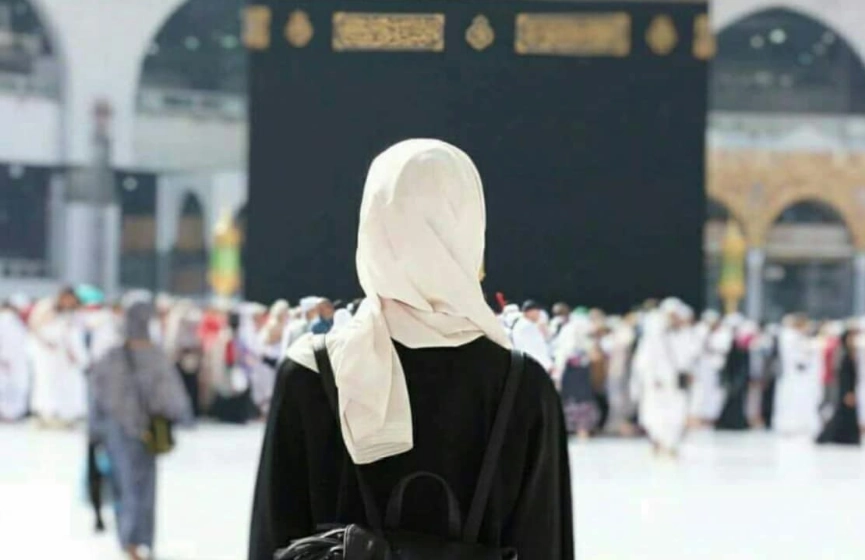Umrah is a sacred pilgrimage to Mecca that Muslims can undertake at any time of year. While less extensive than the Hajj pilgrimage, umrah still carries great spiritual significance. When performing umrah, pilgrims enter a state of ihram, ritual consecration and purity. An important part of this state is following a specific dress code. For women, this code provides guidance on balancing modesty with practical needs.
There are various options for Muslim women to meet the requirements of ihram and dress appropriately for the umrah. The code serves both spiritual and functional purposes. By removing distractions and outward signs of wealth and status, the dress allows pilgrims to focus on the inner self. The simple, practical clothing also allows for ease of movement during the tawaf, or circling of the Kaaba.
Dress Code Regulations
Ihram Clothing
Ihram refers to the sacred state that pilgrims enter when performing umrah and hajj. During this time, women and men dress in simple garments that strip away societal status and emphasize the equality of all believers before God.
For women, there is flexibility within guidelines. Loose, non-form-fitting clothing is required, but women do not need to wear the two-piece white garment men wear. They can wear their regular modest clothing as long as it is not decorative, sheer or tight.
Common clothing choices include:
- White or black abaya – a long, loose robe that covers the entire body except the face, feet and hands.
- Hijab – a headscarf that covers the hair and neck.
- Modest dresses or tunics that fully cover the body.
- Leggings or loose pants worn under an abaya.
By sticking to plain, non-clingy essentials, women can meet the modesty requirements for ihram.
Other Guidelines
Beyond the ihram clothing, there are other guidelines women should follow:
- Clothes should be loose and not show the shape of the body. Anything transparent, tight or figure-hugging goes against the modesty requirements.
- Avoid decorative accents and embellishments. Clothes should be simple and free of patterns, jewels, beads and the like.
- No scents or perfumes should be worn during ihram.
- Makeup and nail polish are also prohibited.
- Shoes should be simple and flat like sandals or slip-ons. Heels and boots are not permitted.
By foregoing fancy clothing, accessories and beauty routines, women can maintain the ritual purity of ihram.
Cultural Considerations
Certain dress code customs also stem from cultural traditions:
- White clothing symbolizes purity and unity. When everyone wears white ihram garments during hajj, it highlights how all pilgrims are equal before Allah.
- Black abayas help absorb and deflect heat better than lighter colors due to the properties of the fabric. This helps cope with the hot Saudi Arabian climate.
- Women must balance modesty requirements with weather conditions and the physical demands of umrah. Layers and breathable fabrics can provide versatility.
There is flexibility built into the dress code to accommodate cultural needs and circumstances.
Packing Tips
When preparing for umrah, women should keep the dress code and Saudi climate in mind:
- Focus on lightweight, breathable and moisture-wicking fabrics. Cotton, linen and rayon are ideal.
- Bring layers to accommodate Saudi Arabia’s varying temperatures. A light cardigan or jacket on top of ihram clothes allows adjusting to cool indoors.
- Pack at least 2-3 sets of ihram clothing in case of dirt, spills or damage. It’s essential to have backups on hand.
- Bring safety pins, belts, adjustable headscarves and other accessories to modify outfits as needed throughout the pilgrimage.
- Stuff a small bag with essentials like hair ties, bobby pins, sanitary pads, wet wipes and tissues. This makes it easy to freshen up during long days.
With smart packing strategies, women can be prepared for their spiritual journey.
Conclusion
The dress code for women performing umrah helps set the tone for this sacred pilgrimage. By wearing the simple, modest ihram clothing, women can focus on the inner self rather than material appearances. Following the guidelines shows respect and devotion to the rituals. While allowing for flexibility, the code asks women to carry the spirit of umrah through in their outward appearance during this blessing-filled journey.





